Curtains in the hall on the ceiling cornice: what are there and how to choose?
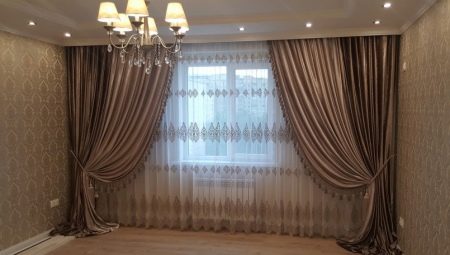
Beautiful curtains and a properly selected cornice can give a room a unique design and grace, without disrupting the functionality of the room. The choice of these integral parts of the interior should be approached thoroughly, especially when it comes to curtains in the living room, because this is where the whole family gathers.
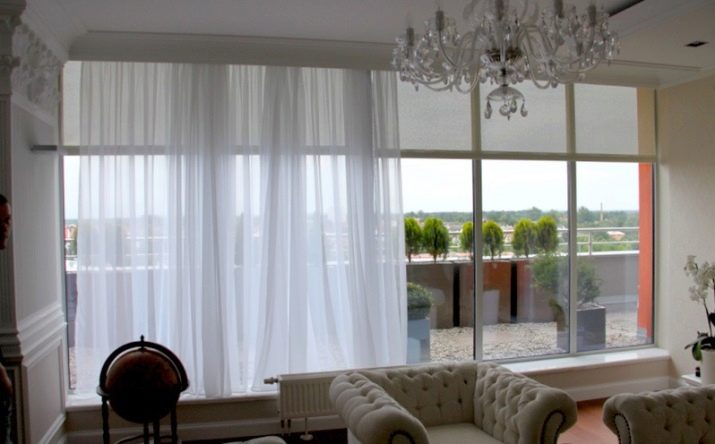
Advantages and disadvantages
As the name suggests, ceiling cornices are attached directly to the ceiling, not to opposite walls. The advantages of this design include the following:
- ability to withstand heavy loads - for curtains made of heavy fabrics, you can always find a suitable model that meets the requirements of strength and beauty;
- visual increase in ceiling height;
- aesthetics - during installation, all fasteners are hidden in the ceiling space;
- versatility - such structures can be used with any type of ceiling;
- variety in installation methods, materials and design solutions.
In addition, this type of cornice is suitable for fully glazed rooms or rooms with non-standard ceiling or wall shapes.
Cons are determined depending on the material. For example, wooden ceiling cornices have little wear resistance and are highly susceptible to mechanical damage.
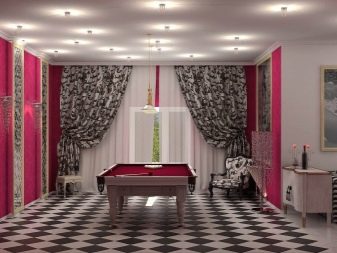
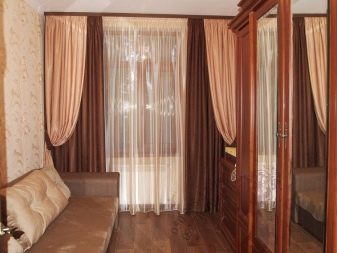
Types of ceiling cornice
On the modern market, you can find a significant variety of ceiling cornices, differing in material, shape, and so on. By the type of material, there are the following types of cornices:
- wooden - for a classic interior, a natural base is suitable, which will harmoniously look with parquet or wood panels; ornate carving will bring lightness and airiness;

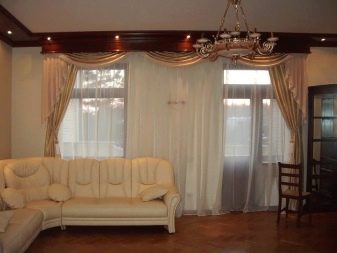
- plastic - affordable price, practicality and a wide range of shades and shapes allow plastic cornices to remain the most popular type;
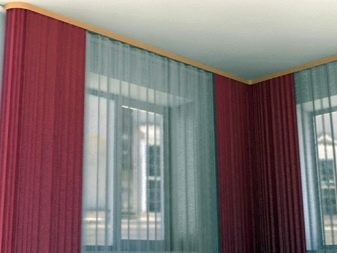
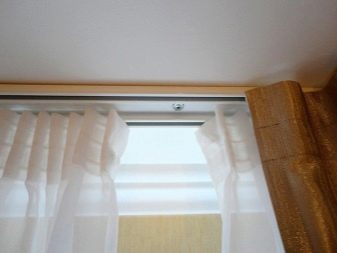
- metal - the most commonly used aluminum, known for its lightness, strength and durability.

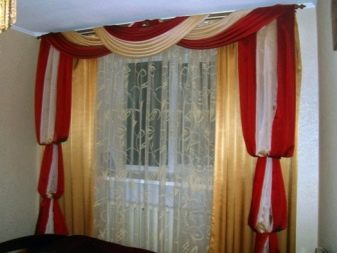
Important! The combination of wood and metal or metal and plastic is not uncommon for modern interiors.
Ceiling curtains also differ in fastening methods and are of the following types:
- strings - this type is one or more metal strings and is intended mainly for light curtains;
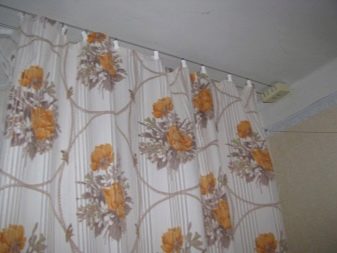
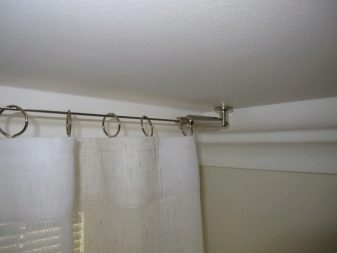
- round - the product consists of a round bar and limiters at the ends, which can act as decorative elements;

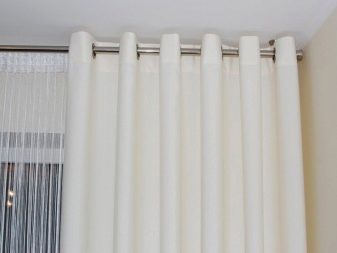
- profile - are ideal models for rooms with atypical layouts; for production, a plastic or metal profile is used, which allows you to achieve different bending radii;

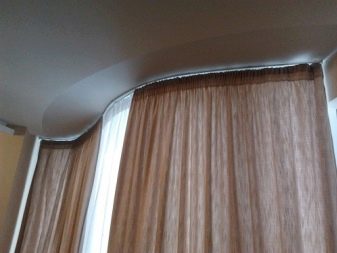
- baguette - wood is the material for such structures; fasteners are hidden behind the outer side of the cornice.

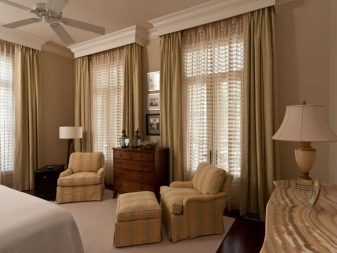
The appearance of curtains is also used for classification: hidden models are made invisible to the eye, and decorative ones, on the contrary, become a full-fledged part of window decoration.
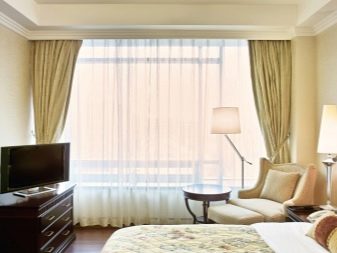
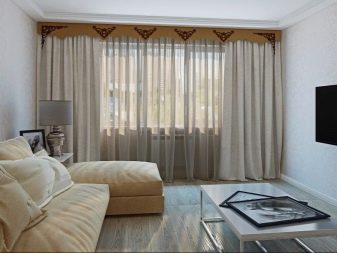
The form plays a significant role in the choice of the cornice, namely:
- straight lines are universal products and are suitable for different types of curtains;
- corner fasteners are perfect for window openings and bay windows;
- if the room has rounded niches, you should pay attention to the rounded cornices;
- so that the curtains fit most tightly to the window, curtain rods with rounded edges should be used.
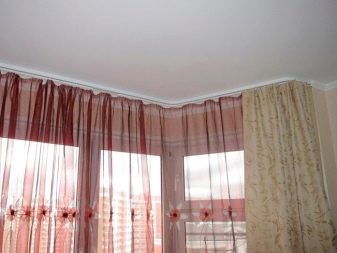
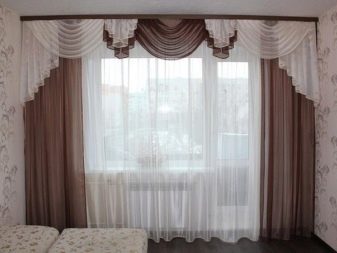
How to choose curtains?
When choosing curtains for the living room, the following factors must be considered:
- ceiling features;
- room parameters;
- general style of the room;
- the possibility of easy care of the product.
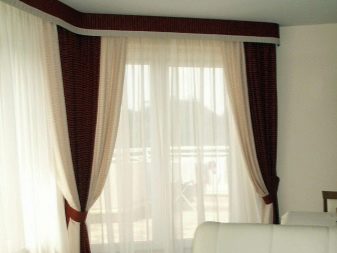
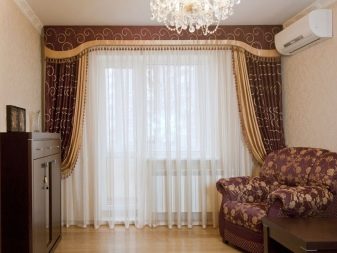
We should not forget about factors such as durability and practicality... To decorate the windows in the living room, you can choose both light curtains with a flowing texture, and curtains from heavy and dense fabrics. The first ones are suitable for people whose living rooms face the non-sunny side, since a sufficient amount of daylight will pass through light fabrics. These can be curtains made of silk, linen and viscose. The latter, on the contrary, are intended for spacious rooms with an abundance of sunlight.
In this case, you can safely choose a heavier fabric (brocade or jacquard), with which you can add extra luxury and aristocracy to the interior.
For small living rooms, preference should also be given to loose material: massive curtains can visually reduce the size of the room, overloading the atmosphere.
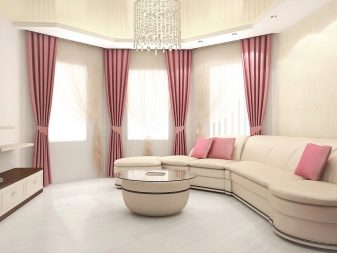
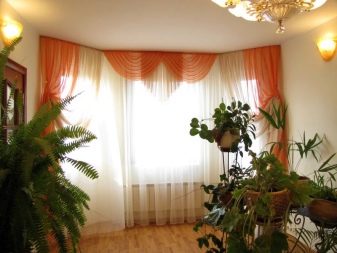
Choosing a suitable curtain model follows from what type of ceiling cornice you prefer for your home:
- for string structures tulle and light weightless fabrics, for example, organza and chiffon, are suitable;
- two- and three-row baguette or profile cornices able to withstand thick or medium curtains made of several types of fabrics;
- curtains with lambrequin add a unique chic to the room; for this type of curtains, there are special curtains with Velcro.
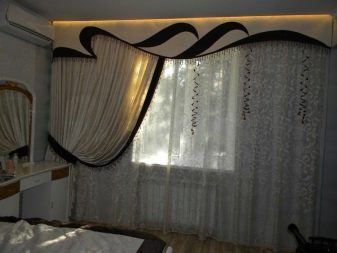
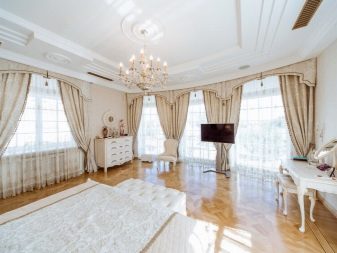
Currently, there are many natural and synthetic materials that are great for decorating the window openings of the hall. Among natural fabrics, the leaders are silk, satin, cotton and wool, and among artificial ones - viscose, polyester and acrylic.
Do not forget about mixed types of fabrics, for example, taffeta and blackout.
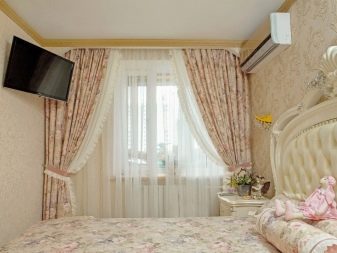

Design Tips
Curtains are one of those decorative elements with which you can change the surrounding space without much effort. It is worth following these simple tips, with the help of which you are most likely to make the right choice:
- to visually increase the size of the living room, you should use curtains with a linear pattern: horizontal lines will help "expand" the room, and vertical lines will "raise" the ceiling;
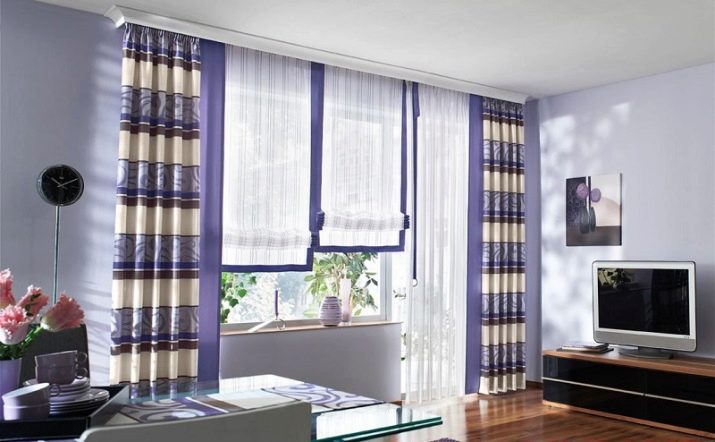
- if the room lacks warmth, use warm shades of yellow, orange, red, gold; warm tones also make the window look larger, while cool shades of blue, purple and neon, on the contrary, add freshness to the room and "cool" it;
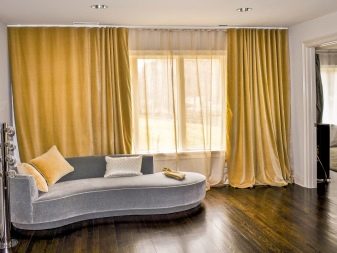
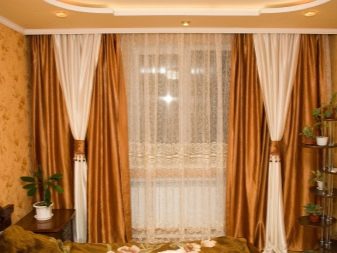
- for classic interiors, natural canvases, for example, made of cotton, are preferable, and for a high-tech living room, synthetic ones;


- curtains in neutral tones (beige, cream, sand) are versatile and suitable for almost any setting; if the interior has a predominantly calm color, it is worth focusing attention on the curtains, using all kinds of decorative details: lambrequins, hooks, eyelets, tassels - and an unusual, bright print.
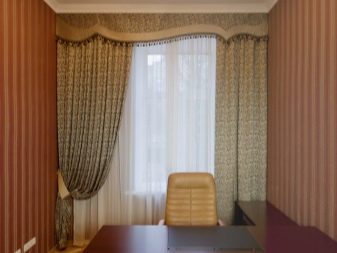
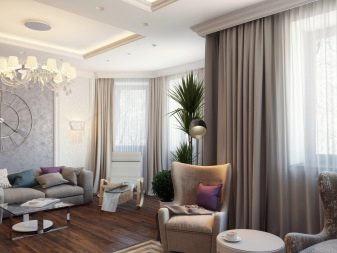
Successful examples in the interior
To consolidate the knowledge gained, we will consider several successful examples in the interior.
- This living room is small in size, but skillfully selected curtains and a ceiling cornice add the necessary space and airiness to the room. The dark ash shade and multi-layered curtains limit the flow of excess sunlight, making the living room more comfortable.
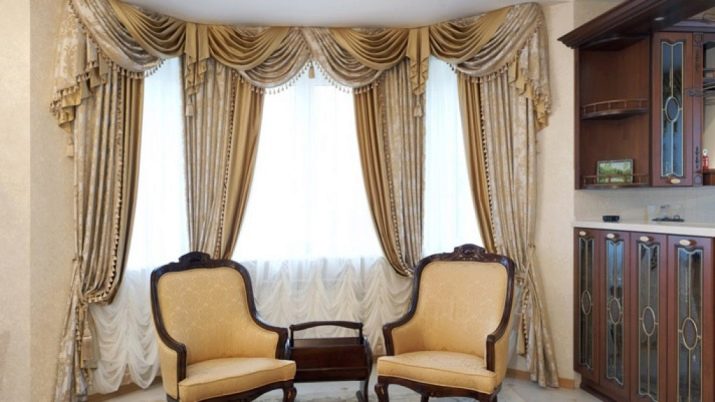
- A massive lambrequin saturates the hall with monumentality and splendor, and the monotonous fabric is in perfect harmony with the furniture upholstery and wall decoration. The abundance of small tassels and light tulle make the curtain weightless.
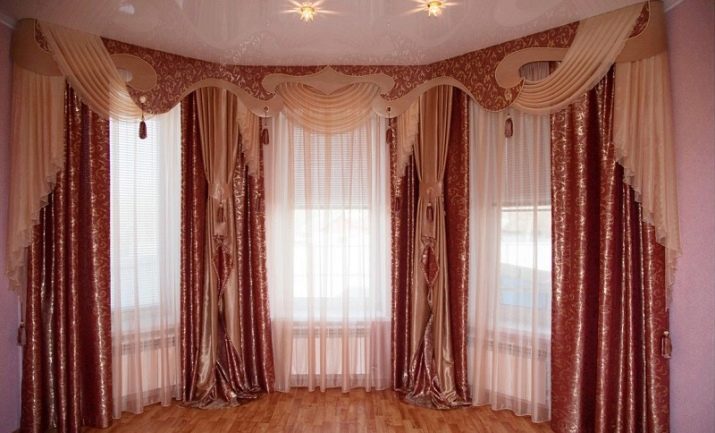
- The unusual print is in a great combination with the overall interior. The predominance of red in the curtains fills the space with a feeling of comfort and livability and brings the window closer, while elements of blue complement the picture with clarity and coolness.

You can find out how to attach the cornice to a stretch ceiling by watching the video below.








